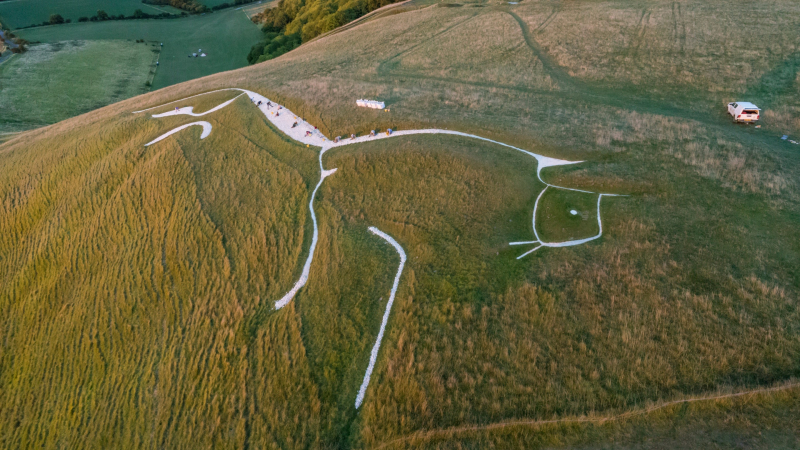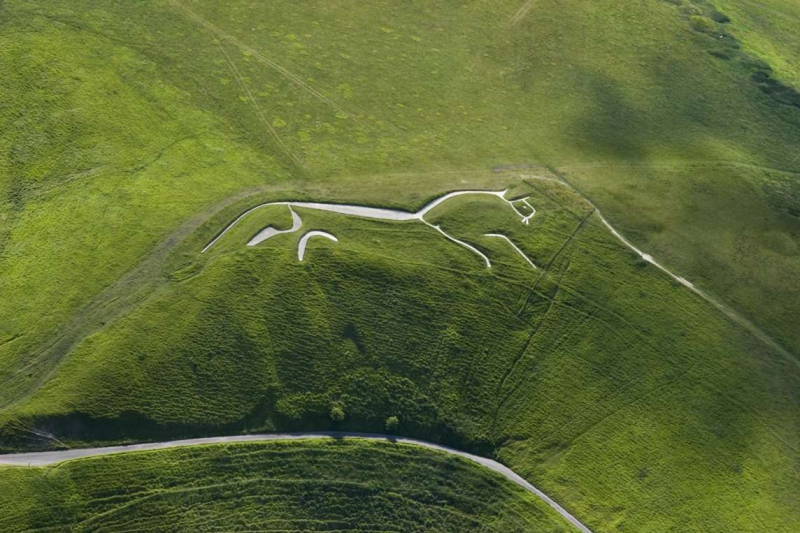White Horse Hill

This massive stick figure in the shape of a Horse is the size of a football field and can be seen from up to 20 miles away. It has endured for 3,000 years due to a recurring tradition known as "chalking day," in which groups of people are given hammers and buckets of chalk and assigned certain places inside the horse's shape. Those employees pound and shatter the chalk into paste, illuminating the white stony channels within the horse and maintaining the oldest hill sculptures in England.
The cleaning is overseen by the National Trust, a conservation organization that ensures the horse's natural shape is perfectly preserved. Given the age of the geoglyph, experts believe the trenches that form the horse's figure were dug with antler picks and wooden spades. And, like many other geoglyphs around the world, no one knows why it was built or how the ancient people who dug it up knew how it would seem from afar.
One feature of White Horse Hill that strikes out is how readily it may erode. The horse, unlike the Nazca Lines, requires ongoing maintenance. It's unclear why its designers chose such an unsafe location for the horse, but archaeologists believe it was done on purpose.
Date: N/a
Location: Oxfordshire, England











